#chondrichthyes
Note
Do you have a favorite species of shark?
Hi there! I do :) it's the zebra shark!

They're just so beautiful :) One of my favorite things from being an aquarist intern was feeding a trio of them! They are target trained, and they inhale big slabs of fish out of the tongs you hold out for them with their teeny mouths. Big dorks.
I also think it's fascinating that they are thought to be the closest relatives to whale sharks!

You can see a resemblance between these two pictures when you check out their double dorsal fins, sloping back, and pronounced longitudinal ridges!

They are also just the sweetest babies - and in captivity, these sharks often perform parthenogenesis, which is when females basically pup their own clones without the need for a male!
Lemme know your favs in the comments 🦈🤘
#zebra shark#stegostoma tigrinum#chondrichthyes#elasmobranchs#marine biology#marine bio#marine biology studyblr#marine bio studyblr#biology#zoology#marine life#animals#aquarium#shark#sharks
82 notes
·
View notes
Text
I love butterfly rays because half of the images of them online come in two varieties and it’s

a) a baybey!
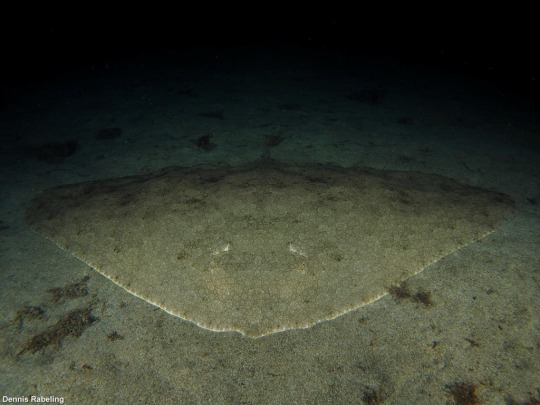
b) I know what you are.
#been sitting in my drafts forever#marine biology#marine bio#biology#science#marine biology memes#ray#butterfly ray#chondrichthyes#cartilaginous fish#creatures#sea creatures#cryptid#marine biodiversity#marine bio meme#meme#science meme#bio#ocean lover#ocean#thalassaphobia#thalassaphobia cw#post#also ty guys for 170+ followers!! :.)
90K notes
·
View notes
Text
man’s resisting the urge to petpet soooooo hard

#chondrichthyes#elasmobranch#euselachi#hexanchiformes#hexanchus griseus#h. griseus#bluntnose sixgill shark#cow shark#shitpost#meme#gif#redondo#wa#washington#puget sound#sharks#fish#diver#rebreather#ccr#technical diving#tec#tech#diving
58K notes
·
View notes
Note
Any fun facts about basking sharks? (Really big sea puppies)

Cetorhinus maximus or Basking Shark
These are the second largest shark and fish in the world (after the whale shark), they can grow to be 12 m (40 ft) long!
Also like whale sharks, they're ram filter feeders. This means that to catch prey, they simply open their mouths, swim forward, and catch whatever happens to get in their way! This is why they (and other ram filter feeders) tend to have such large mouths. The basking sharks mouth can be up to 1 m (3ft wide).

While sharks are mostly thought to be solitary creatures, a lot of species do school and the basking shark is one of them! They're usually divided by sex (except during periods of mating), and schools of over 100 females have been spotted!


And probably the coolest fact about them- THEY CAN JUMP OUT OF THE WATER. Despite weighing around 5,000 kg (approx. 11,000 lbs) they can breach 1.2 m (4 ft) into the air! It's believed they do this as a method to remove parasites.
#marine biology#marine ecology#animals#science#biology#animal facts#wildlife#marine life#ocean#fun facts#shark#sharks#basking shark#cool sharks#sea creatures#sea animals#marine animals#fish#chondrichthyes#cool animals#cute animals#ecology#zoology#ichthyology#whale shark#sea puppies
1K notes
·
View notes
Text
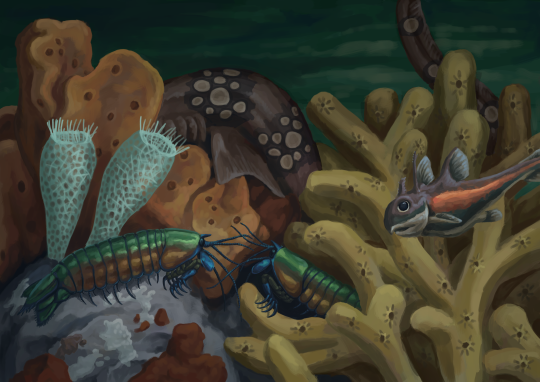
A sponge reef from the Carboniferous Bear Gulch formation. A pair of female Daidal acanthocercus mantis shrimp forage for food together (some mantis shrimp species form long term monogamous relationship pairs). Echinochimera, a strange chondrichthyan, swims past in the foreground while the elongated Thrinacodus forages between sponges.
#paleoart#palaeoart#bear gulch#mantis shrimp#sponge#aquatic#underwater art#fish#chondrichthyes#lesbian#<- the mantis shrimp are lesbians
484 notes
·
View notes
Text

Lessiniabatis aenigmatica was a rather strange stingray.
It lived around 50-48 million years ago during the early Eocene, in a shallow warm sea covering what is now Italy, with its three known fossil specimens all coming from the fish-rich Monte Bolca fossil beds.
About 60cm long (~2'), it had a round pancake-like body similar to many modern seafloor-dwelling stingrays – but uniquely it was also almost tailless, with only a tiny, slender, stingless tail.
It wasn't a particularly strong swimmer, instead probably spending most of its time buried in the muddy seafloor sediment. When on the move it likely swam along just above the surface of the seafloor using undulations of its fins, foraging for smaller bottom-dwelling animals like worms, molluscs, crustaceans, and fish.
—
NixIllustration.com | Tumblr | Patreon
#science illustration#paleontology#paleoart#palaeoblr#lessiniabatis#dasyatoidea#myliobatiformes#stingray#batoidea#ray#elasmobranch#chondrichthyes#cartilaginous fish#fish#art#sea pancake
484 notes
·
View notes
Text
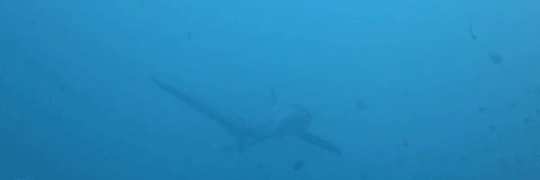


Thresher sharks are named for their exceptionally long tail fin, which can be as long as the shark's total body length, and which they use while hunting to stun prey.
©
343 notes
·
View notes
Photo

A bluespotted ribbontail ray (Taeniura lymma) off the coast of Safaga, Egypt
by Kary Mar
#bluespotted ribbontail ray#rays#stingrays#fish#cartilaginous fish#Taeniura lymma#taeniura#dasyatidae#Myliobatiformes#Chondrichthyes#chordata#wildlife: egypt#wildlife: africa
439 notes
·
View notes
Text
First time at the National Aquarium yesterday!
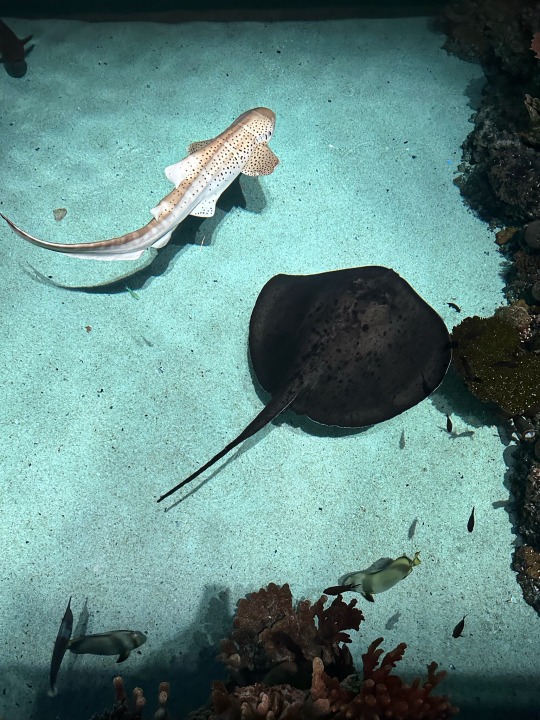
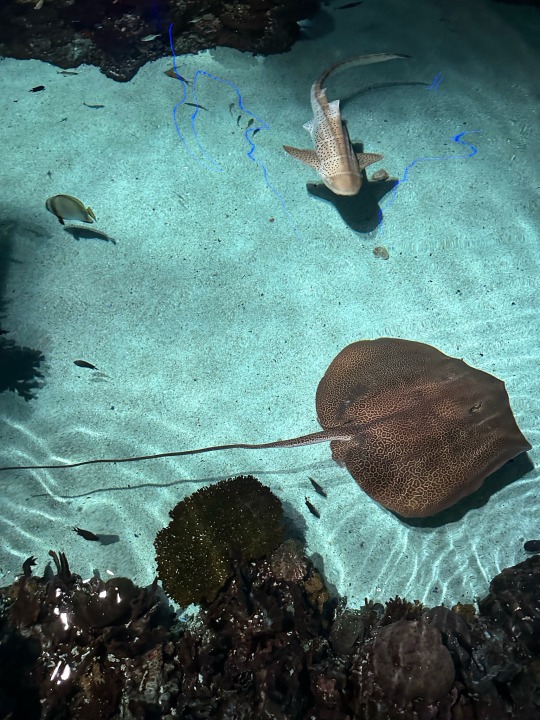



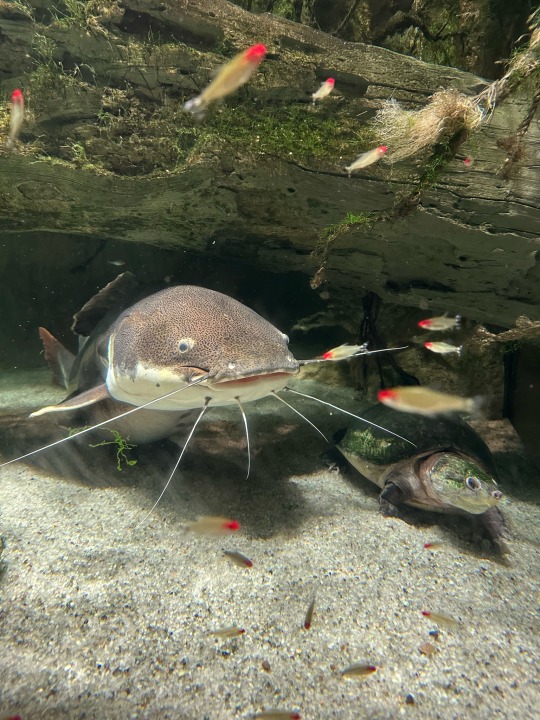
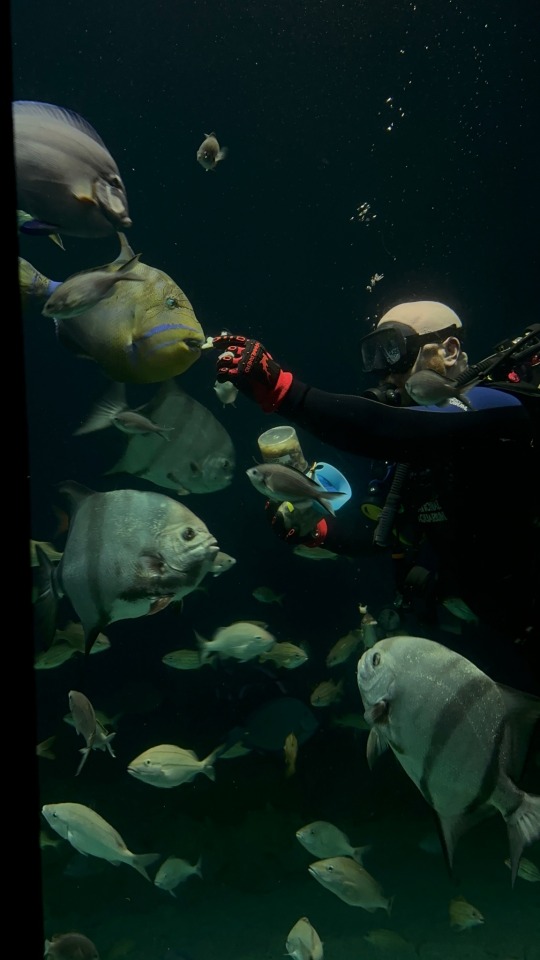
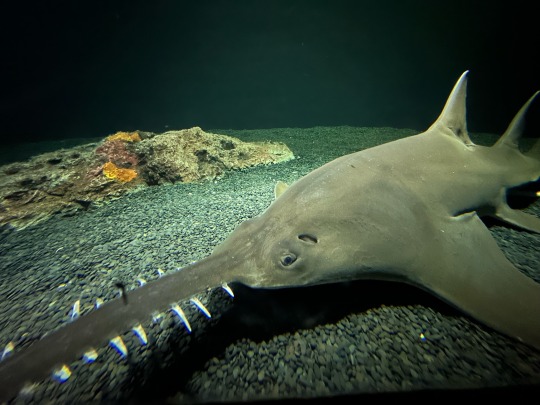


#aquarium#national aquarium#shark#sharks#zebra shark#stingray#marine biology#marine life#science#chondrichthyes#sea life#fish#animals#baltimore#jellies#jellyfish#invertebrates#sawfish#filefish#seahorse#diving#diver#scuba#scuba diving#scubadiving#lobster
122 notes
·
View notes
Note
Sometimes I see you on my dash doing a science and it makes me happy and do you have any shark facts pls? Sharks are so cool. Especially the weird deep sea sharks that always get ignored when ppl talk about great whites and such (no shame to great whites they are very lovable,)
Of course I have quite a lot!
Okay so we can start with the first shark ancestors, the spiny sharks! They lived in the Silurian, more than 400 million years ago. They looked pretty unique as each fin was actually a spine supporting the whole fin, and had already reacquired the cartilaginous skeleton that modern sharks have!

Nobu Tamura / CC BY-SA 4.0
They often had a bunch of little pairs of "finlets" (not real fins, but spines serving a similar purpose) between their actual fins! So spiky!
Then we come to the true sharks (and rays). Or, nearly. Turns out, there are two main groups of shark-like cartilaginous fish alive today. On the one hand the sharks and rays, and on the other hand the chimeras, majestic creatures often found in the deep sea!

Havforskingsinstituttet / CC BY-SA 4.0
Turns out however, the ancestors of chimeras were historically way more shark-like! And ranged between adorable and pretty weird, and more often than not both! Here's one of them: the sawblade shark, Helicoprion!

Entelognathus / CC BY-SA 4.0
And here's the anvil shark!
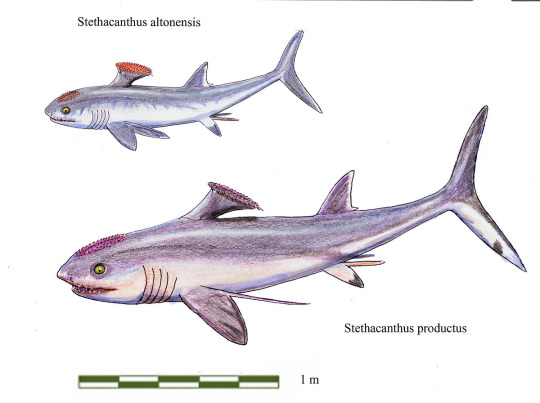
DiBgd / CC BY-SA 4.0
And the wtfshark, Squaloraja!
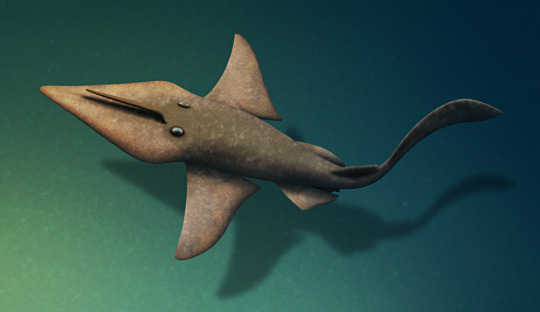
Nix Illustrations / I don't know the license but he's on Tumblr
And now we can move on to the actual sharks. And rays. And sawsharks. And sawfish. And sawskates. The design so good they had to invent it thrice.
Here's a sawfish (these ones are closer to rays!), heavily judging whoever took the photograph. Surprisingly, they're the largest of the bunch, reaching up to 7 meters - while sawsharks are barely a meter in length at best, and sawskates aren't alive anymore but could reach a respectable 4 meters! (although they were wider relative to their size, which has to count for something?)

Simon Fraser University - University Communications / CC BY 2.0
Now that we saw the saws, we can move on to actual sharks... wait what's that? An interruption by the coolest species of six-finned ray?
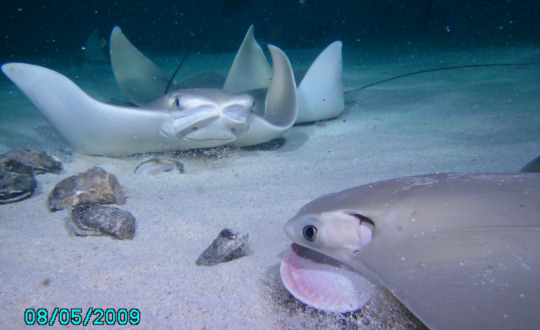
Robert Fisher, Virginia Sea Grant / CC BY-ND 2.0
Seems like it. Of course I had to mention my favourite cartilaginous fish in the bunch. Cownose rays (and their manta ray cousins) are the only vertebrates to have developed an entire new pair of fins - on their face, to help them grab stuff! Since fish paired fins are homologous to our limbs, it would be like having an extra pair of arms coming from our face!
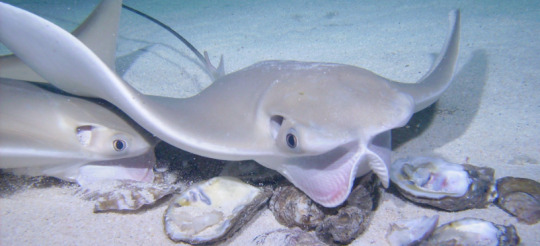
Robert Fisher, Virginia Sea Grant / CC BY-ND 2.0
Back to sharks now (finally)! And speaking of stuff it's rare to have six of, what about sixgill sharks?

No author information / Public domain
The most divergent group of true sharks alive today, the deep-sea creatures that we call frilled sharks are actually very derived, despite their prehistoric appearance! Ironically, their more ordinary-looking sixgill cousins, the cow sharks, are more representative of how sharks started off back in the days!
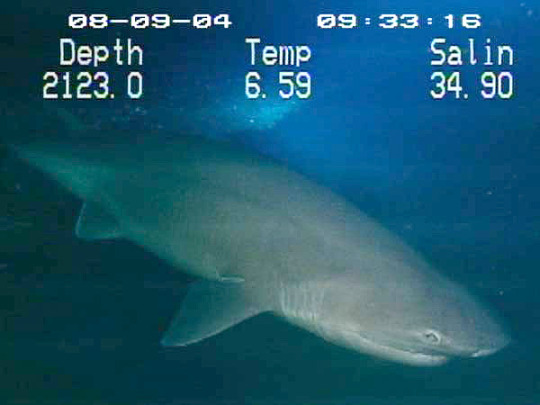
NOAA / Public domain
Still six gills because why not. Or even seven, because really, why not.
Next step on our shark list (and back to the regular five-gill pattern), the angelsharks! Or sand devils, because they really couldn't decide on these ones. Angels or devils, they're absolutely adorable pancakes.
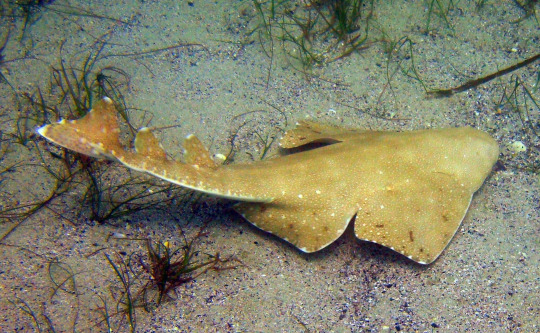
Nick Long / CC BY-SA 2.0
Now, we would still have five more orders of sharks to go, but these are the pretty well-known ones (great white shark, hammerhead shark, etc.) and this post is getting pretty big, so I'm happy to have presented cool unique ones already! Have a nice day, and don't forget - there are always more shark species to learn about!
151 notes
·
View notes
Text
This school of scalloped hammerheads was not a sight we expected to see, but what a sight it was! Experts are actually unsure why scalloped hammerheads school, but some theorize they school this way as juveniles, and continue the behavior into young adulthood!
#hammerhead shark#scalloped hammerhead#sharks#chondrichthyes#elasmobranchs#marine biology#marine bio#marine biology studyblr#marine bio studyblr#biology#zoology#marine life#animals#scuba diving#marine conservation#ocean
1K notes
·
View notes
Text
Chondrichthyes: the Shark and Ray Pokémon 🦈

Btw how are there only 3 evolution lines of shark/ray pokemon?!
#pokemon#digital art#art#my art#nintendo#pokemon art#digital painting#sketch#sinnoh#illustration#poster#sharks#shark#ray#rays#chondrichthyes#gible#gabite#garchomp#mantyke#mantine#sharpedo#carvanha#shark week
28 notes
·
View notes
Photo
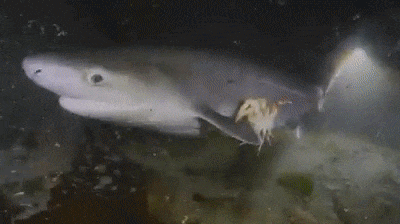
crab uber
#chondrichthyes#elasmobranch#hexanchiform#hexanchidae#hexanchus griseus#h. griseus#bluntnose sixgill shark#crab#crustacean#red rock crab#dungeness crab#invert#invertebrate#meme#shitpost#gif#puget sound#wa#washington#redondo#uber#lyft
33K notes
·
View notes
Text
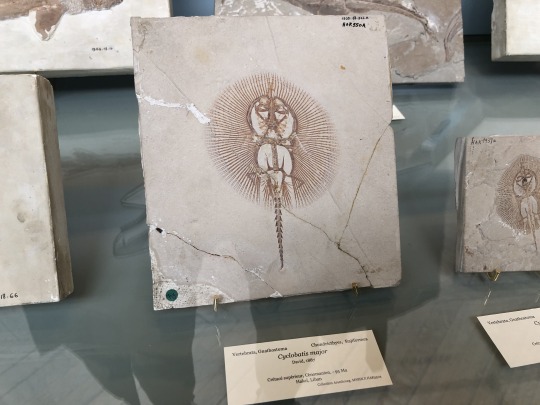

Cyclobatis, a ray, and Scapanorhynchus, a shark with a fantastic nose. I adore how both of them look.
30 notes
·
View notes
Text

Maghriboselache mohamezanei was a cartilaginous fish from the late Devonian Period, about 369 million years ago, living in the shallow marine waters that covered what is now the Anti-Atlas mountain range of Morocco in northwest Africa.
Up to around 2.5m long (~8'), it's known from several exceptionally well-preserved and near-complete skeletons.
It had a streamlined body with large pectoral fins, small pelvic fins, and a strongly keeled crescent-shaped tail fin. And although it was superficially shark-like in appearance, it was actually part of a lineage known as cladoselachids, which were much closer related to modern chimaeras than to sharks.
It's unclear if Maghriboselache had two dorsal fins like its close relative Cladoselache, but some specimens preserve evidence of a chunky spine where the front dorsal fin would have been. Others show no sign of a front dorsal fin or spine at all, suggesting there may have been some sexual dimorphism going on in this species, with males having a spine (and possibly also an associated front dorsal fin) and females only having a rear dorsal fin.
But the most unusual feature of Maghriboselache was its nose.
It had a very broad snout with large and unusually widely-spaced nostrils, which would have given it the ability to "smell in stereo" and determine the direction of scents carried through the water much more precisely – making it the earliest known example of that sort of sensory specialization.
———
NixIllustration.com | Tumblr | Twitter | Patreon
#science illustration#paleontology#paleoart#palaeoblr#maghriboselache#cladoselachidae#symmoriiformes#holocephali#chondrichthyes#cartilaginous fish#fish#art#wide snoot
242 notes
·
View notes
